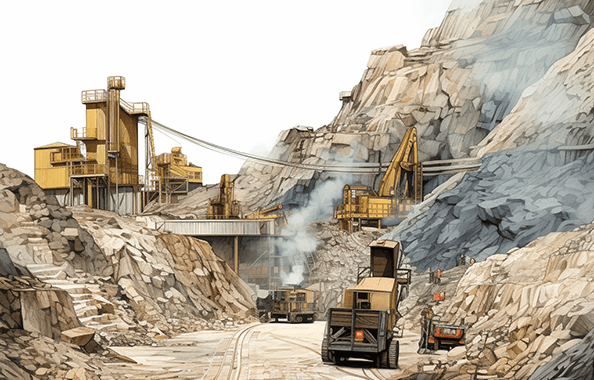Mining operations in stone mines involve a complex interplay of various factors that collectively determine the production costs. A comprehensive understanding of these components is crucial for optimizing operational efficiency and cost-effectiveness. In this article, we delve into the key aspects that influence mining costs in stone mine production, shedding light on each element’s significance and impact.
1. Block Materials:
The primary focus of stone mine production is the extraction of valuable block materials. The cost of these materials encompasses expenses related to drilling, blasting, and cutting techniques employed to extract stone blocks from the mine. Efficiency in these processes can significantly impact the overall cost structure, making technological advancements in extraction methods a critical consideration for cost optimization.

2. Transportation:
Once extracted, stone blocks need to be transported from the mining site to processing or distribution facilities. Transportation costs involve expenses associated with fuel, maintenance of vehicles, and labor required for loading and unloading. Optimizing transportation logistics and routes can lead to substantial savings in terms of fuel consumption and overall transit time.

3. Equipment Loss:
Mining equipment endures considerable wear and tear due to the abrasive nature of the mining environment. The cost of equipment loss includes repairs, replacements, and maintenance of machinery used in excavation, hauling, and processing. Employing robust maintenance schedules, adopting advanced equipment monitoring technologies, and investing in high-quality equipment can mitigate equipment-related expenses.

4. Labor Costs:
Skilled labor is an indispensable asset in stone mine production. Labor costs encompass wages, benefits, and training expenditures for miners, machine operators, supervisors, and maintenance personnel. Implementing efficient labor management practices, offering training programs to enhance skill sets, and ensuring a safe working environment can positively impact productivity and reduce turnover rates, contributing to cost optimization.

5. Water and Electricity Costs:
Mining operations require substantial volumes of water for tasks such as dust suppression, equipment cooling, and processing. Additionally, electricity powers various equipment and lighting within the mine. Managing water consumption through recycling and optimizing electricity usage by employing energy-efficient equipment and lighting solutions can mitigate water and electricity-related costs.
In conclusion, the interpretation of mining costs in stone mine production reveals a multifaceted landscape where several factors intricately influence the overall cost structure. Implementing strategies to enhance efficiency in block material extraction, transportation, equipment maintenance, labor management, and resource consumption can collectively lead to substantial cost savings. As stone mine production continues to evolve, embracing innovative technologies, sustainable practices, and optimized processes will undoubtedly play a pivotal role in driving down costs while maintaining high production standards. By meticulously addressing each cost component, mining operations can achieve a harmonious balance between profitability and sustainability.

